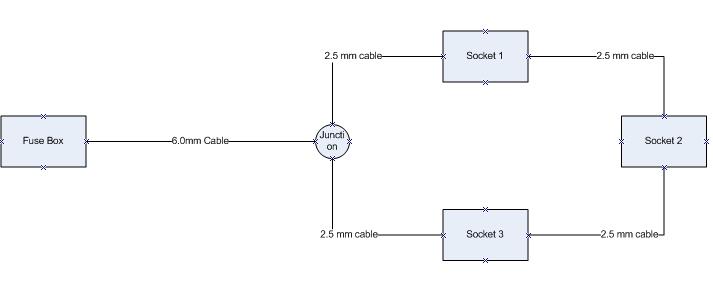I would like a bit of advice please, I have a 6mm which comes direct from the fuse box which leads in to the kitchen, as far as I am aware there are no sockets on the radial part of the cable, can i run 2.5mm cabling to create a mini ring main for the plugs in the kitchen?
Below is a diagram of the circuit:
Many thanks
Below is a diagram of the circuit:
Many thanks


